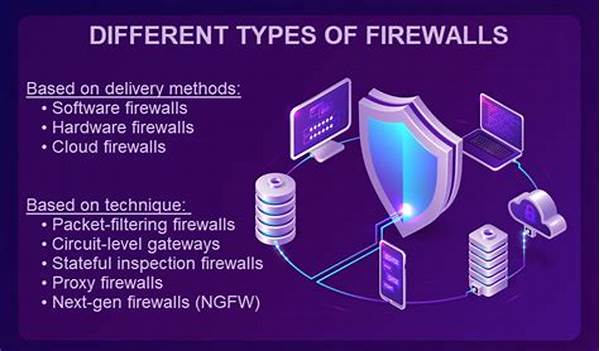- Machine Learning-Based Firewalls: The Future of Cybersecurity
- How Machine Learning is Revolutionizing Firewalls
- The Mechanics Behind Machine Learning-Based Firewalls
- Real-World Applications of Machine Learning-Based Firewalls
- The Evolution of Cyber Defense
- Future Trends in Machine Learning-Based Firewalls
Machine Learning-Based Firewalls: The Future of Cybersecurity
In the rapidly evolving landscape of technology, where the digital realm intertwines with every aspect of our lives, safeguarding data has never been more crucial. Cybersecurity, once viewed as a concern primarily for IT professionals, has become a vital topic in boardrooms and everyday conversations alike. As the stakes continue to climb, innovative solutions have emerged, among which machine learning-based firewalls stand out as a groundbreaking advancement. Imagine a world where cyber threats are not just repelled, but predicted and neutralized before they manifest—a digital Valhalla where data roams free of danger and disruption.
Picture this: You’re sipping your morning coffee, blissfully oblivious to the myriad threats lurking in the vast digital ocean outside your window. Yet, in the servers maintaining your world—your emails, your photos, your bank details—an unseen battle is raging. Enter machine learning-based firewalls. They are your silent protectors, learned and adapted, arming themselves with algorithms so advanced they can differentiate between a friendly neuron and a renegade byte. This isn’t just security; it’s a revolution wrapped in ones and zeros.
One might say it’s a fairy tale of the modern age, where advanced computation meets the need for unbreakable security. Traditional firewalls, though stalwart defenders in their own right, operate on predefined rules, somewhat akin to a castle moat. However, as cyber threats become more sophisticated, these stagnant defenses are no longer enough. This is where machine learning-based firewalls come into play, utilizing artificial intelligence and vast data sets to learn and evolve, transforming their strategies in real-time against cyber adversaries.
—
How Machine Learning is Revolutionizing Firewalls
In their essence, machine learning-based firewalls leverage the power of artificial intelligence to detect anomalies in network traffic that would typically evade traditional firewalls. Standard firewall systems might see a large file transfer as benign, focusing on rules about size and connection. A machine learning-based firewall, however, examines behavioral patterns, recognizes subtle deviations, spots potential threats, and effectively neutralizes them. It’s like hiring a security guard who not only checks IDs but also evaluates body language and tone of voice—sophisticated, smart, and exceptionally discerning.
The Mechanics Behind Machine Learning-Based Firewalls
To appreciate the intricacies of these firewalls, let’s consider how they function. Unlike their predecessors, machine learning-based firewalls depend on data—lots of it. They digest countless records of both malicious and benign behavior to train their models. Each packet of data that flows through the network is analyzed, classified, and acted upon, all in the blink of an eye. This dynamic nature allows them to adapt to new threats as they arise, providing a level of proactive security that is both cutting-edge and indispensable.
Machine learning algorithms thrive on patterns. They observe, learn, and remember, continuously refining their defenses based on the evolving threat landscape. And here lies the magic: this continuous learning cycle builds a defense mechanism that gets smarter over time, capable of tackling the myriad of cyber challenges ranging from ransomware to complex Advanced Persistent Threats (APTs). Organizations adopting machine learning-based firewalls find themselves better prepared, more resilient, and less reactionary—a fortress retooled for modern digital skirmishes.
A company might liken its experience with these firewalls to employing a trusted yet silent partner. You don’t see them, perhaps you don’t even know they’re there, faithfully performing their duty day in and day out. When interviewed, representatives from businesses using such technologies cite not just peace of mind, but the purely rational metric of reduced incident responses and lower breach costs as tangible benefits. They witness an uptick in trust from stakeholders and customers, translating technical prowess into real-world business advantages.
Real-World Applications of Machine Learning-Based Firewalls
The Evolution of Cyber Defense
Looking ahead, the conversation surrounding cybersecurity will inevitably pivot more sharply towards such intelligent solutions. With machine learning-based firewalls leading the charge, organizations can not only anticipate but outpace malicious attempts with unprecedented foresight. As our reliance on digital ecosystems deepens, so too must our commitment to safeguarding these spaces. After all, in a world where data reigns supreme, the silent warriors of machine learning-based firewalls are not just protectors—they are pioneers.
—
Future Trends in Machine Learning-Based Firewalls
The beauty of these firewalls lies in their ability to learn without human intervention. As more entities invest in machine learning-based firewalls, the tech world can look forward to widespread enhancements in their sophistication and reliability. From machine learning models that predict threats before they are fully formed to data strategies that mitigate risks preemptively, the possibilities are as limitless as they are exhilarating.
As the narrative of cybersecurity continues to unfold, embracing machine learning-based firewalls becomes not just advantageous, but essential. These learning algorithms offer what every digital guardian dreams of—a constantly evolving fortress equipped to face tomorrow’s challenges today, turning an action-packed science fiction fantasy into a secure and realized future.

